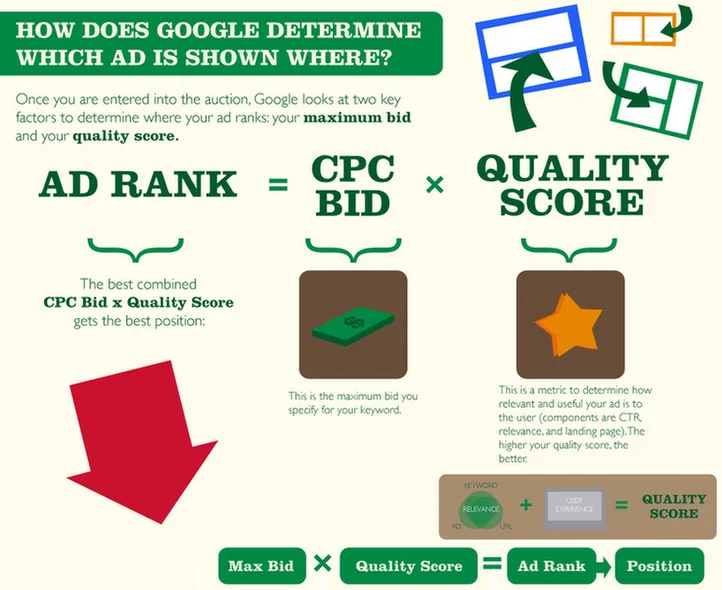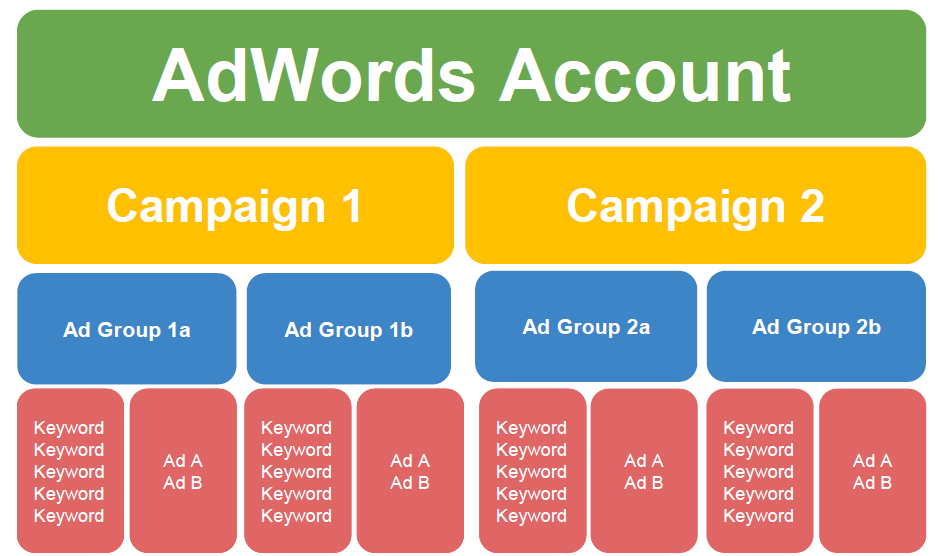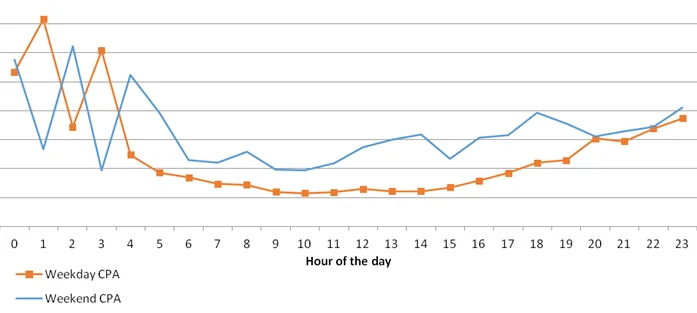Search advertising, also known as paid search advertising, Google advertising, and search engine marketing, is a marketing technique that places online advertisements in search engine results. Businesses who place ads in the search results pay a small fee every time somebody clicks on one of their ads (this is known as “pay-per-click” advertising).
The results in red are examples of search advertisements
Search advertising is a powerful form of advertising because people who search on Google reveal a lot about their intent (that is, what they want to do or buy) when they search. Advertisers have the ability to bid on keywords so that their ads show up when people are looking for exactly the kinds of things they sell.
Think about it: This allows you to reach a much more targeted audience than you could with a billboard or a TV spot! For example, you could bid to place an ad in the search results when people in California search for a “divorce lawyer.” You can also tell the search engine the maximum amount you’re willing to pay when somebody clicks on your ad. There are lots of levers you can pull to make sure your ads only reach people who are likely to buy, which stretches your ad budget.
In this article, you’ll learn more about how search advertising works and how to do it right.
Types of search advertising
The most popular platform for search advertising is Google AdWords, since Google is the most popular search engine by a large margin, though smart advertisers also make use of Bing Ads (which gives them additional reach for lower costs).
AdWords and other search advertising networks operate on an auction-like system, where businesses bid to appear in certain search results. When and where your ads appear, as well as how much you pay per click, is determined by a few factors, including your bid as well as your Quality Score, a measure of the relevance of your ads to the keywords you are bidding on.
The Quality Score system is important because it encourages advertisers to create high-quality ad campaigns that serve search engine users well. If you’re trying to “spam” the search results with irrelevant, low-quality ads, you’ll have a hard time making AdWords work for you.
In addition to traditional search advertising, AdWords offers ways to place Google ads on other Google properties, such as:
Learn more about how search advertising works in this visual.
How to make search advertising work for you
When done right, search engine advertising is a highly effective way to bring in new business and drive online sales.
However, it’s important to be meticulous when building and managing your search campaigns. Seemingly small mistakes can cost you money and cut into your ROI.
Search advertising best practices include:
A logical account structure
It’s important to organize your search ads account in a logical way that allows you to optimize different types of ads and ad sets separately. For help with this important step, check out our complete guide to Google Ads account structure.
Smart keyword research
Search advertising starts with keywords. You need to bid on the right keywords so that your ads appear in front of the most interested audiences (people who are more likely to but what you’re selling!).
Try our Free Keyword Tool to get started with your keyword research, and check out this guide for help defining your keyword strategies.
Creative, relevant search ads
To earn a good Quality Score (and lower CPC’s), it’s important to write ads that are relevant to your keywords and to searchers’ needs.
But don’t just stuff your search ads with keywords. Get creative and emotional. Put yourself in your customer’s shoes. Be sure to describe your value proposition, and include a call to action.
Here are some more tips on writing great search ads.
Cost-saving targeting strategies
Your budget isn’t unlimited, so it’s important to contain costs by defining who will see your ads, and when. This can be accomplished through tactics like geotargeting (showing search ads only in specific locations) and dayparting (only showing ads during business hours).
Ongoing optimization
You can’t run an effective search campaign on autopilot. You’ll need to check in regularly and perform routine optimizations for the best results.
By paying attention to these best practices and doing regular work on your account, you can beat out the competition and rise to the top of the search results.






0 Comments